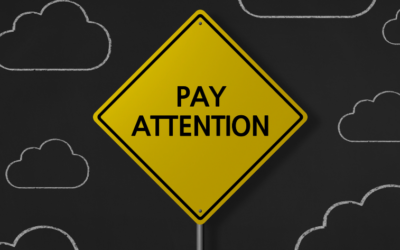Communication is essential to our daily lives, allowing us to convey information, share ideas, and build relationships. However, communication can sometimes go awry despite its importance, leading to misunderstandings, conflicts, and missed opportunities. This article will explore some of the most common communication pitfalls in various aspects of our lives.
By understanding and recognizing these pitfalls, we can strive to improve our communication skills and create more meaningful connections with others.
Understanding Communication Pitfalls
Effective communication is a two-way process that involves both sending and receiving messages. However, numerous factors can impede this process, resulting in misunderstandings and misinterpretations. It is crucial to grasp the significance of effective communication in our personal and professional lives, as it forms the foundation for building trust, fostering collaboration, and enhancing relationships.
We often focus on clarity and conciseness when we think about effective communication. Clear and concise communication is vital in accurately conveying ideas and ensuring the intended message is received and understood. It allows us to express ourselves effectively and helps individuals connect emotionally, share information efficiently, and resolve conflicts amicably.
However, communication is not always as straightforward as we might think. We need to be aware of various communication pitfalls to become better communicators. We can anticipate and address potential challenges proactively by identifying and understanding these common pitfalls.
The Importance of Effective Communication
Effective communication is the lifeblood of any successful personal or professional relationship. It lets us express our thoughts, feelings, and ideas clearly, fostering understanding and empathy. When communication breaks down, the consequences can be severe, leading to strained relationships, missed opportunities, and even workplace errors.
Imagine a scenario where two colleagues are working on a project together. If they fail to communicate effectively, essential details may be overlooked, leading to errors and delays. On the other hand, clear and concise communication allows for smooth collaboration, efficient problem-solving, and the achievement of shared goals.
Identifying Communication Pitfalls
Verbal Communication
Verbal communication is one of the most common forms of communication, but it is also prone to pitfalls. Misunderstandings can arise due to differences in accents, language barriers, or even the tone of voice used. It is essential to be mindful of these potential pitfalls and try to speak, listen actively, and seek clarification when needed.
Non-Verbal Communication
Non-verbal communication includes body language, facial expressions, and gestures. These subtle cues can significantly impact the message being conveyed. For example, crossed arms or a frown can indicate disinterest or disagreement, even if spoken words suggest otherwise. Paying attention to non-verbal cues and being aware of our body language can help prevent misinterpretations.
Written Communication
Written communication encompasses emails, memos, reports, and other written documents. When writing, it is essential to be mindful of grammar, punctuation, and clarity. Ambiguous or poorly worded messages can lead to confusion and misunderstandings. Taking the time to proofread and revise written communication can help ensure the intended message is accurately conveyed.
Digital Communication
In today's digital age, communication often occurs through various digital platforms, such as instant messaging, video conferencing, and social media. While these platforms offer convenience and efficiency, they also present unique challenges. Miscommunication can occur due to the lack of non-verbal cues, the potential for misinterpretation of written messages, or technical glitches. Awareness of these challenges and adapting our communication style can help mitigate potential pitfalls.
By understanding these common communication pitfalls and actively working to overcome them, we can enhance our communication skills and build stronger connections with others. Effective communication is a lifelong learning process, and by continuously striving to improve, we can navigate the complexities of human interaction with greater ease and success.

Verbal Communication Pitfalls
Verbal communication is the most common form involving spoken words and conversations. It is how we convey our thoughts, ideas, and emotions to others. However, despite its prevalence, miscommunication can quickly arise in this area.
Let's delve deeper into some of the common pitfalls of verbal communication and explore how they can impact our interactions:
Misinterpretations and Assumptions
One of the significant pitfalls of verbal communication is misinterpretation. We often assume that others understand what we mean or expect them to read between the lines. These assumptions can lead to confusion, misunderstandings, and unnecessary conflicts.
Consider a scenario where a colleague asks you to “get it done as soon as possible.” What does “as soon as possible” really mean? Does it mean within the hour, by the end of the day, or within a week? Without clarifying the timeframe, miscommunication can occur, resulting in missed deadlines and frustration.
To avoid such pitfalls, it is crucial to be explicit and seek clarification when necessary. Instead of assuming that others understand, ask questions to ensure everyone is on the same page. By doing so, you can prevent misunderstandings and foster effective communication.
Overuse of Jargon and Technical Language
In professional contexts, technical jargon and complex language can create barriers to effective communication. While jargon can help convey precise meanings within specific fields, it can hinder understanding when used excessively.
Imagine attending a conference where the speaker bombards the audience with a barrage of technical terms and acronyms. If you are unfamiliar with the jargon, you may feel excluded and struggle to grasp the discussion's main points. This can lead to disengagement and a communication breakdown.
Whenever possible, it is important to simplify our language and ensure that our message is accessible to a broad audience. Instead of relying heavily on jargon, strive to explain complex concepts in simpler terms. Doing so can promote inclusivity and enhance understanding among all participants.
Verbal communication is a powerful tool, but it has its pitfalls. By being mindful of misinterpretations and assumptions and avoiding the overuse of jargon, we can navigate these challenges and foster effective communication in all aspects of our lives.
Non-Verbal Communication Pitfalls
Non-verbal communication encompasses body language, facial expressions, and gestures. It often conveys messages more powerfully than words, but it can also lead to misunderstandings.
Understanding and effectively utilizing non-verbal communication is crucial in both personal and professional interactions. By being aware of the potential pitfalls, we can ensure that our non-verbal cues align with our intended message.
Inappropriate Body Language
Our body language can say more than we think. Avoiding eye contact, crossing our arms, or displaying defensive postures might unintentionally convey disinterest, disagreement, or hostility. It is crucial to be aware of our body language and strive to align it with our intended message to avoid misunderstandings.
For example, maintaining an open and relaxed posture during a job interview can convey confidence and interest in the position. On the other hand, crossing our arms tightly across our chest might give the impression of being closed off or unapproachable.
Similarly, in a social setting, avoiding eye contact while someone is speaking to us might make them feel ignored or unimportant. Maintaining eye contact shows that we are actively listening and engaged in the conversation.
Lack of Eye Contact
Eye contact is an essential aspect of non-verbal communication. It shows attentiveness, interest, and respect. However, failing to maintain eye contact can give the impression of disengagement or lack of confidence. By making eye contact with others, we convey our sincerity and willingness to participate in the conversation actively.
It is important to note that cultural differences can influence the appropriate use of eye contact. In some cultures, prolonged eye contact might be considered disrespectful or aggressive; in others, it is seen as a sign of trust and honesty. Awareness of these cultural nuances is crucial when communicating with individuals from different backgrounds.
Maintaining appropriate eye contact during meetings or presentations can enhance our credibility and establish rapport with our audience in professional settings. It shows that we are confident in our message and value the input of others.
On the other hand, avoiding eye contact during a conversation might make the other person feel unheard or unimportant. By consciously making an effort to maintain eye contact, we can foster better communication and build stronger relationships.

Written Communication Pitfalls
In today's digital age, written communication is significant, whether through emails, text messages, or formal documents. It has become the primary mode of communication for many individuals and organizations. However, it also presents its own set of challenges that can hinder effective communication.
Ambiguity and Lack of Clarity
One common pitfall in written communication is ambiguity and lack of clarity. Written messages can often be misinterpreted due to the absence of non-verbal cues such as facial expressions and tone of voice. When composing emails or other written documents, we must be precise and explicit in conveying our thoughts. By using concise language and avoiding vague expressions, we can minimize the risk of misunderstanding.
Poor Grammar and Spelling
Another challenge in written communication is poor grammar and spelling. Errors in grammar and spelling can significantly impact the effectiveness of written communication. They affect the credibility and professionalism of the message and can lead to confusion and misinterpretation. Reviewing our written communication and using grammar-checking tools can help us polish our messages and ensure clarity.
Cultural Barriers
Furthermore, cultural differences and language barriers can also pose challenges in written communication. When communicating with individuals from different cultural backgrounds or whose first language is not English, it is crucial to be aware of potential misunderstandings that may arise. Being mindful of cultural sensitivities and using simple language can help bridge the communication gap.
In addition to these challenges, the lack of immediate feedback in written communication can also be a pitfall. Unlike face-to-face or verbal communication, written messages often require time for the recipient to process and respond. This delay can sometimes lead to miscommunication or missed opportunities for clarification. It is important to be patient and proactive in seeking clarification when needed.
Lastly, the informal nature of digital communication, such as text and instant messaging, can sometimes lead to a lack of professionalism. Maintaining a professional tone and adhering to appropriate etiquette when communicating in a professional setting is essential. This includes using proper salutations, avoiding slang or abbreviations, and being mindful of the recipient's preferences.
While written communication offers convenience and efficiency, it has its pitfalls. Ambiguity and lack of clarity, poor grammar and spelling, cultural differences, lack of immediate feedback, and informality can all hinder effective communication. By being aware of and addressing these challenges, we can enhance our written communication skills and ensure our messages are clear, concise, and impactful.
Digital Communication Pitfalls
Digital communication channels like social media and email have become increasingly prevalent in today's interconnected world. However, these platforms come with their unique pitfalls.
Misuse of Social Media
Social media platforms allow individuals to express themselves and voice their opinions. However, their ease of use and informality can sometimes lead to misunderstandings and conflicts. It is crucial to exercise caution and think before posting or sharing content online, as our words and actions can have long-lasting consequences.
Email Etiquette Mistakes
Email remains a primary means of professional communication, but it can also be a breeding ground for communication pitfalls. Poorly written emails, excessive use of emoticons or abbreviations, and failure to respond promptly can negatively impact our professional relationships. We can ensure clear and effective communication by adhering to proper email etiquette.
In conclusion, effective communication is essential for building connections, resolving conflicts, and achieving success in both personal and professional spheres. By understanding and recognizing the common communication pitfalls we have explored, we can strive to enhance our communication skills and build stronger relationships.
Remember, effective communication is a continuous process that requires active listening, clarity, and empathy. By being mindful of our communication habits and making necessary adjustments, we can avoid common pitfalls and become better communicators overall.
Explore the Path to Success with CorEthos
Thank you for journeying with us through this exploration of ideas. Your presence here is a testament to a shared passion for reimagining business, and it resonates with the very essence of CorEthos: bringing humanity back to business.
Perhaps the curiosity that brought you here still burns brightly, yearning for further discovery. In that case, we invite you to delve into our blog, where each article opens new doors to understanding, insight, and growth. They are tailored to leaders like you, eager to unravel the complex tapestry of today's business world.
If you find yourself intrigued by the delicate science behind communication and leadership, why not embark on a journey of discovery with our newsletter? Subscribing is like opening a treasure chest filled with wisdom that connects you to the essence of collaboration and community.
Intensify Your Leadership Journey with Our Mastermind Program
Our newly launched Mastermind Program provides a focused setting for tackling challenges like honing effectiveness, inspiring your team, and mastering the art of delegation. It's a unique space where business acumen meets human-centered values, delivered with the same quality and integrity you expect from CorEthos. Ready to dive deeper into your leadership potential?
We Would Love to Get to Know Your Challenges Better!
Challenges in business? We see them not as stumbling blocks but as opportunities for transformation. Your unique path awaits, beginning with a complimentary consultation with CorEthos. We'll build bridges over obstacles and forge a trail to success, leveraging our three foundational pillars.
Your adventure with CorEthos doesn't have to end here. Let's continue to build, learn, and grow together, reflecting on what makes your business uniquely human. We are your compass, guiding you through the challenges and celebrating the triumphs. Let's begin this exciting journey today.



